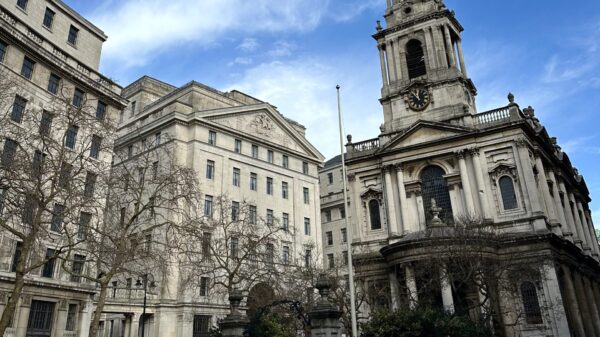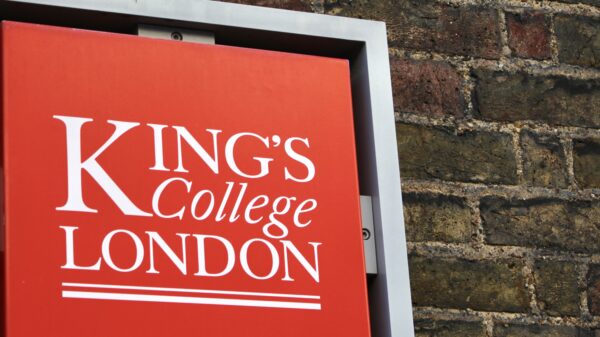Staff writer Anoushka Sinha reports on this year’s Higgs lecture, delivered by Dame Professor Jocelyn Bell Burnell and hosted by the KCL Physics department in honour of the late Professor Peter Higgs.
Every year, King’s holds a special lecture, known as the Higgs lecture in honour of one of our most valued alumni, Professor Peter Higgs. This year’s lecture was especially sentimental as students and professors both remembered the impact of the late Professor.
Physics students and enthusiasts alike were treated to a lecture from a true star of the field on 5 June– Professor Dame Jocelyn Bell Burnell.
Professor Peter Higgs (known for hypothesising the existence of the Higgs boson) attended King’s College London from 1947 to 1952. In 1964 the Higgs field was hypothesised, and in 2012, the Higgs boson was finally detected. Earlier this year, aged 95, Professor Peter Higgs sadly passed away.
The event itself, however, was beyond enjoyable to all who attended.
In 1967, Bell Burnell – a postgraduate student at the time – noticed a discrepancy in her papers. Many months later, she and her advisor, Anthony Hewish, comically dubbed these radio pulses ‘Little Green Men’ (LGM for short).
It was soon established that the radio pulses were not, in fact, being sent from little green men, but rather from rapidly spinning neutron stars – pulsars.
Despite her profound impact on the field, attendees were pleasantly surprised by Bell Burnell’s humble disposition and humorous delivery. Even the name of the lecture, ‘Bursts, Bangs, and things that go Bump in the Night’, showed off her witticism.
When asked how she felt upon detecting the first radio pulses, she responded with a modest and pragmatic explanation of the long process required to establish the authenticity of a discovery.
It can be difficult to find veterans in the scientific community who also possess apt communication skills to engage a room full of people. Bell Burnell’s description of the ‘deluge of information’ which will soon flood the field of short-wavelength astrophysics made it clear that she is, in fact, one of those few veterans who can make a lecture not just engaging but entertaining too.
The lecture itself was about the changes being made in how we observe objects in deep space.
Until now, in order to observe the farthest objects, astrophysicists had to use long exposures of telescopes to tiny fractions of the sky, absorbing all the light possible over the course of hours, days, and weeks. The furthest objects would typically be visible only in short wavelengths of light like radio waves (shorter than the wavelength of light that humans can see).
However, there has been a recent shift in observation techniques, wherein scientists are opting to use multiple short exposures, rather than one long exposure. This approach allows researchers to observe changes in these distant objects; whereas before, we could only see the average of all the light emitted by a far-off galaxy over a long period of time, we can now see how that emitted light changes over time.
This study of temporary behaviours and flares from distant objects is called transient astronomy and, to quote Bell Burnell, “Transient Astronomy is coming of age”.
Once she explained the background, Bell Burnell began by explaining how tensions between the USA and Russia in the 1960s led to the discovery of long and short gamma bursts coming from space – though initially thought to be nuclear test ban violations from Russia. It was eventually found that these were, in fact, super massive supernovae and neutron star mergers.
She went on to describe how, more recently, the intentional use of short exposure observation found the largest gamma burst ever detected. It lasted ten minutes but could be detected for ten hours. Sourced from 2 billion light years away, and detected on 9 October 2022, this gamma burst was dubbed the ‘Brightest Of All Time’ (BOAT for short).
When it was time for questions and answers, she told one attendee that, in her opinion, the BOAT is the most exciting discovery in this field due to its sheer size and the implication of the size of future discoveries, considering this is just one of the very first.
These long and short bursts from the deepest observable parts of space are only the first transient events to be detected.
The field of transient astronomy is still in its early stages. The Catalina and Zwicky observatories, in Europe and the USA respectively, are adding to the database continuously and, according to Bell Burnell, the field is about to be attacked by a ‘deluge of information’ as the Vera Rubin Telescope in Chile is being built.
When it is up and ready to go, the Vera Rubin Telescope is estimated to detect between one and ten million transient events every night due to its profound sensitivity – no wonder she called it a ‘deluge’.
Bell Burnell’s description of a microwave leakage at lunch time near the Fermi and Agile Satellites, and how it skewed observations of the Crab Nebula, had audience members both giggling and gawking at her story-telling skills.
So, to sum it all up, the Higgs Lecture 2024 was a memorable and enjoyable celebration of Professor Higgs and his passion for astrophysics.










